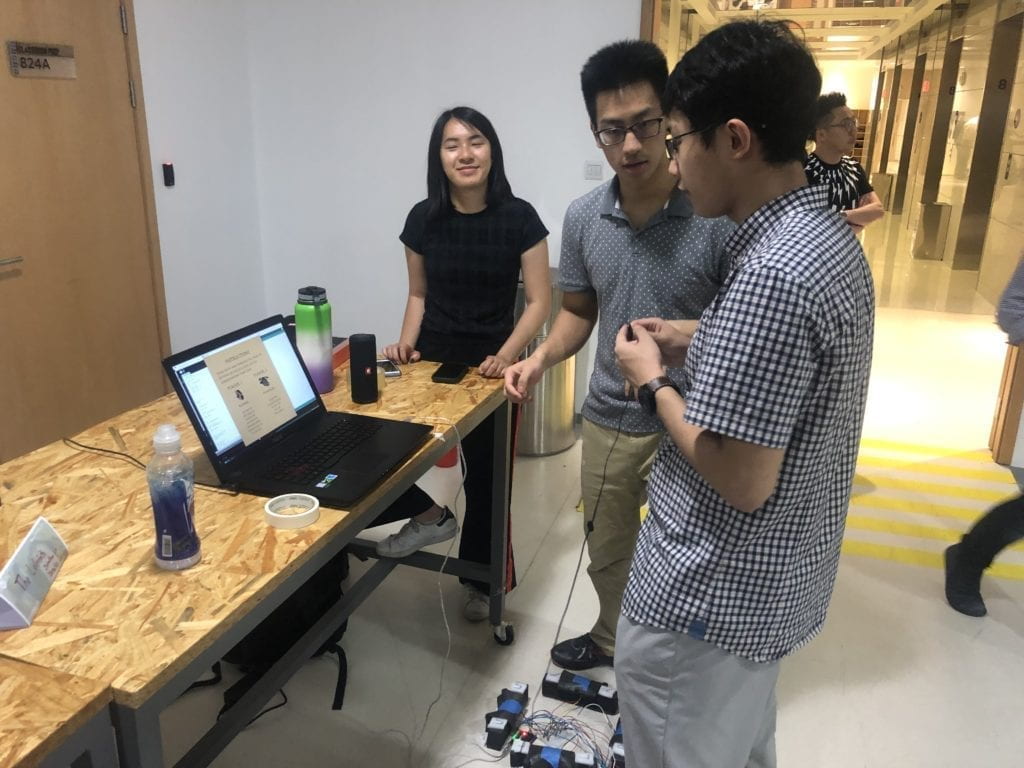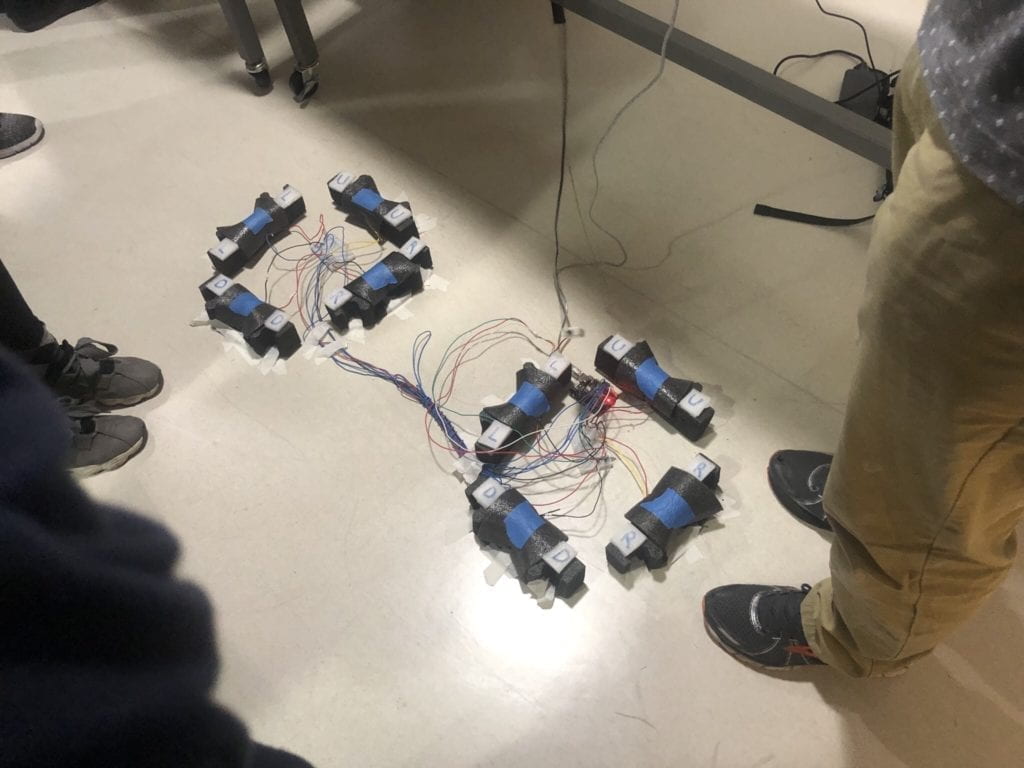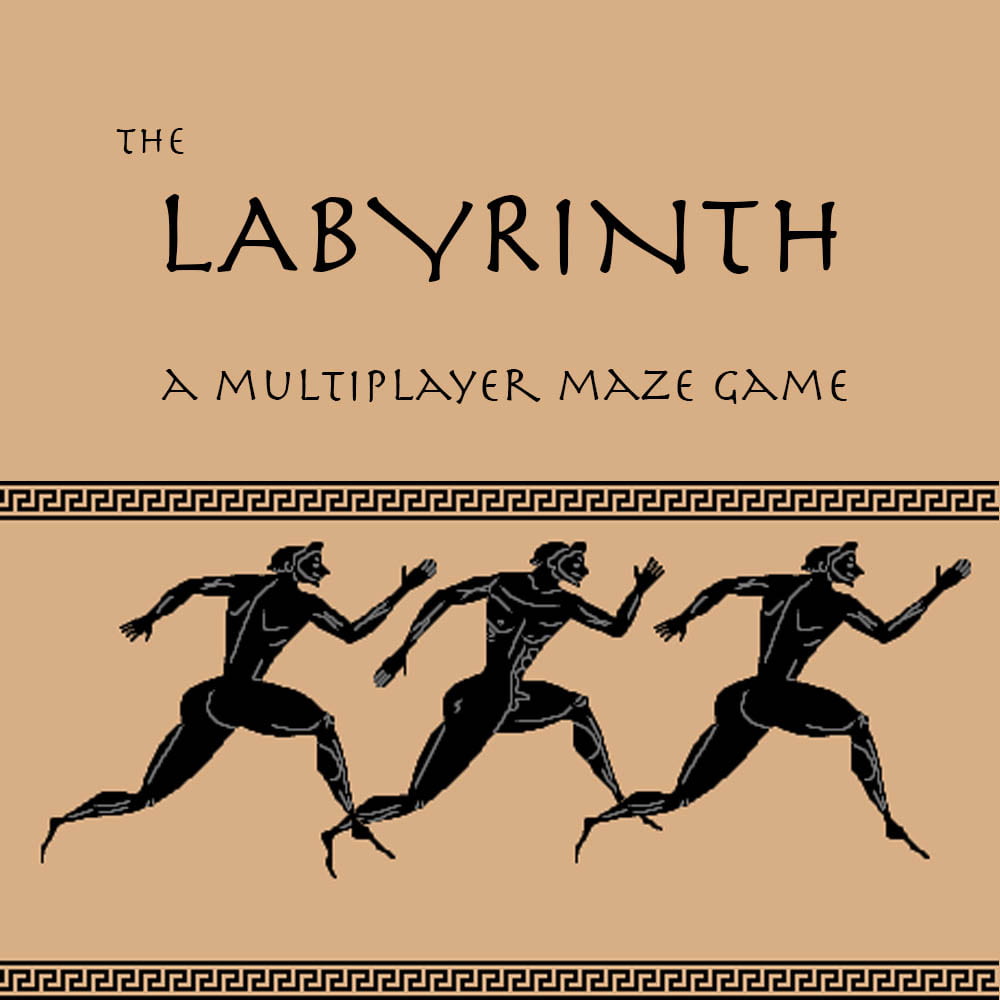Before creating our game, my partner and I were aware that when we were presenting our project we had very little time to explain what our project was about. We knew that a lot of people would not know what The Labyrinth was and our goal was to teach them. Therefore from the beginning, we knew we wanted to include an intro video showing the actual myth itself, and along with with it an instruction page on how to play the game. Our intention was to create a DDR machine that would be used to control the characters. We decided to use buttons and the heart rate sensor for our game. At first, we thought about using pressure sensors instead of buttons, but then we realized if our intention was just to sense that the player wanted to go in a particular direction, buttons would not only be easier but more practical. The heart rate sensor was something we had in mind because we wanted to mimic in a maze where someone’s heart rate would be high due to confusion, fear, and adrenaline.
DDR machines are very technologically advanced and in order to provide a clean simple design that is shown in arcades is very expensive. We had to improvise with less knowledge and fewer resources. We knew the placement of the Arduino would be important because if we had placed in the wrong the wiring would be all over the place. In the end, we realized we had to use longer wires to connect the two DDR machines and could not avoid the wire mess. We could only make it not affect the interaction and make it look somewhat organized. User testing was super useful in not only seeing how people interacted with our project but also in observing how people reacted to the information presented to them. Was our intro video informative enough? Were our instructions for the games clear? With all this information, we ended up adding more educational aspects to our game and labeled the DDR pads for their respective directions, for example, we added U, D, L, and R (UP, DOWN, LEFT, RIGHT). I believe this advice we got definitely improved our project and made it easier for others to try it.
Our goal was to create an interactive project that would teach people about the story of The Labyrinth. I believe we definitely created something interactive because it not only was it a two-player game, but each player also had to interact with a physical DDR that would control their character in-game. Ultimately, I believed we did succeed because people who tried our game told us that they had fun, and afterward they would ask more questions about The Labyrinth. Giving them more information about this awesome myth and introducing them into other stories was definitely a highlight during the IMA show. One problem we had was that our DDR was a wired mess, and I would love to improve this if we had more time. Looking at our DDR machines, it looked like a prototype, but we really had no easy way to contain the wires. We tried putting a box to hit the wires, but then sometimes the wires would get unplugged from the Arduino or breadboard and that would just be a huge hassle to remove the box. If we had more time I would have loved to create a DDR machine that used fewer wires and maybe even add more mechanics to our game, for example, a good idea someone gave us was an option for randomized mazes. Every time our code failed, wires fell out, or designs didn’t work, all these times taught us that there is a better way to do things. The code, wires, design, and everything can always be improved to be made simpler and more appealing. The fact that our idea became a reality makes me proud that we accomplished that. After a whole a semester of Interaction Lab, I have learned that the question of “Who cares” does not really matter. If you truly believe in your project, then that means that you care and that is what matters. What matters is what you learn from creating your project and the final product represents that you have gone through a journey of learning and ended with success. To end, I believe one of the most important lessons I have learned from the Interaction Lab is that people will always be there to help you. The number of hours the IMA fellows and instructors spent just helping people was just amazing. They never judged the problem you were having, whether it be to helping a student build a simple LED circuit to coding a system of gravity, they were always helpful. This class was awesome and it has taught me you should not care too much when others don’t care, and of course, I now know the definition of interaction!
DEMO
PHOTOS



MEDIA USED IN PROJECT







CODE